Best Swift Programming Guides to Buy in November 2025
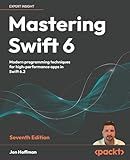
Mastering Swift 6: Modern programming techniques for high-performance apps in Swift 6.2


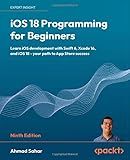
iOS 18 Programming for Beginners: Learn iOS development with Swift 6, Xcode 16, and iOS 18 - your path to App Store success


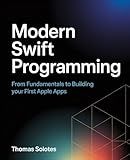
Modern Swift Programming: From Fundamentals to Building Your First Apple Apps


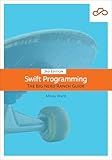
Swift Programming: The Big Nerd Ranch Guide


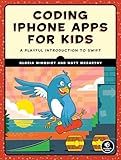
Coding iPhone Apps for Kids: A Playful Introduction to Swift


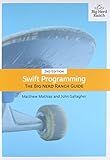
Swift Programming: The Big Nerd Ranch Guide (Big Nerd Ranch Guides)



Swift in Depth
- MASTER SWIFT WITH EXPERT INSIGHTS AND PRACTICAL EXAMPLES!
- IDEAL FOR BEGINNERS AND PROS-BOOST YOUR CODING SKILLS TODAY!
- UNLOCK YOUR POTENTIAL: CREATE APPS WITH SWIFT’S POWERFUL FEATURES!


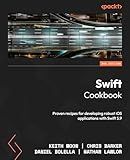
Swift Cookbook: Proven recipes for developing robust iOS applications with Swift 5.9


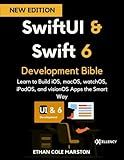
SwiftUI & Swift 6 Development Bible: Learn to Build iOS, macOS, watchOS, iPadOS, and visionOS Apps the Smart Way (Swift and iOS Mastery)


Option sets are an essential feature in Swift that allows you to define and work with custom sets of related options or flags. They provide a flexible and type-safe way to manipulate multiple options simultaneously.
To work with option sets in Swift, you need to define an enumeration using the OptionSet protocol. This protocol requires you to specify a raw value type, typically an integer, that represents each option in the set.
Here's an example of how to define an option set in Swift:
struct MyOptions: OptionSet { let rawValue: Int
static let option1 = MyOptions(rawValue: 1 << 0)
static let option2 = MyOptions(rawValue: 1 << 1)
static let option3 = MyOptions(rawValue: 1 << 2)
static let allOptions: MyOptions = \[.option1, .option2, .option3\]
}
In this example, we define an option set called MyOptions with three options: option1, option2, and option3. Each option is assigned a unique value using bitwise left shift (<<) to ensure there are no overlaps. The allOptions property combines all options into a single option set.
To interact with option sets, you can use several methods and operators. Some common operations include:
- Creating an option set instance: let mySet: MyOptions = [.option1, .option3]
- Checking if an option set contains a specific option: if mySet.contains(.option2) { // Option 2 is present }
- Combining option sets using union: let combinedSet = mySet.union(.option2)
- Removing an option from a set using subtraction: let updatedSet = mySet.subtracting(.option1)
- Checking if an option set is a superset or a subset of another set: if mySet.isSuperset(of: .option2) { // mySet contains at least all elements of option2 }
Option sets in Swift make it easier to work with flags and multiple options within a single value. They enable cleaner code by avoiding cumbersome bit manipulation and providing intuitive operations to manipulate sets of options.
How to define custom options for an option set in Swift?
To define custom options for an option set in Swift, follow these steps:
- Create an option set enumeration by conforming to OptionSet protocol:
struct CustomOptions: OptionSet { let rawValue: Int
static let option1 = CustomOptions(rawValue: 1 << 0)
static let option2 = CustomOptions(rawValue: 1 << 1)
static let option3 = CustomOptions(rawValue: 1 << 2)
// Define more options as needed
static let allOptions: CustomOptions = \[.option1, .option2, .option3\]
}
- Provide a raw value for each option using bitwise shifting and a unique power of two.
- Define additional options as per your requirement.
- To define an option set instance, you can use the options individually or combine them using the bitwise OR operator |:
let selectedOptions: CustomOptions = [.option1, .option2] // or let selectedOptions: CustomOptions = .option1 | .option2
Now, you can use the selectedOptions instance to check for specific options using contains(_:) method:
if selectedOptions.contains(.option1) { // Option 1 is selected }
if selectedOptions.contains(.option2) { // Option 2 is selected }
You can also iterate through all options using the forEach(_:) method:
selectedOptions.forEach { option in // Perform actions for each selected option }
By defining custom options for an option set, you can easily handle multiple states or configurations in a more readable and expressive way.
How to convert an option set to an array in Swift?
To convert an option set to an array in Swift, you can use the rawValue property of the option set.
Here's an example:
struct MyOptionSet: OptionSet { let rawValue: Int
static let option1 = MyOptionSet(rawValue: 1 << 0)
static let option2 = MyOptionSet(rawValue: 1 << 1)
static let option3 = MyOptionSet(rawValue: 1 << 2)
static let option4 = MyOptionSet(rawValue: 1 << 3)
}
let optionSet: MyOptionSet = [.option1, .option3, .option4]
let optionArray = optionSet.rawValue.nonzeroBits.map { MyOptionSet(rawValue: $0) }
In this example, MyOptionSet is an example option set with four options. We create an option set optionSet with three options selected.
To convert it to an array, we use the nonzeroBits property of the option set's raw value. This property returns a sequence of the bits set to 1 in the raw value.
We then use the map function to transform each bit value into an instance of MyOptionSet using its raw value.
After running this code, optionArray will be an array of MyOptionSet instances containing the selected options.
What is the use of raw values in option sets in Swift?
In Swift, option sets allow you to define a set of values that can be combined using bitwise operations. Option sets are useful when you want to represent a set of options or flags that can be selected or deselected.
Raw values in option sets are used to define the underlying type of the individual options. Each option in an option set has an associated raw value, which can be of any type that conforms to the RawRepresentable protocol. By default, the raw value is an integer, but it can also be a string or any other custom type that is explicitly specified.
The use of raw values in option sets provides several benefits:
- Automatic initialization: With raw values, you can easily initialize an option set using its individual options. You can assign a raw value to an option using the initializer, and Swift will automatically create an option set with that value.
- Raw value conversion: Option sets with raw values can be seamlessly converted to and from their raw representations. This allows you to store and retrieve option sets from different data sources, such as user defaults or network responses.
- Bitwise operations: Raw values enable you to use bitwise operations like OR (|), AND (&), and NOT (~) on option sets. These operations are useful for combining, filtering, or excluding specific options from an option set.
Overall, the use of raw values in option sets provides a convenient and flexible way to represent a set of options and perform bitwise operations on them.
What is the best practice for naming options in an option set in Swift?
When naming options in an option set in Swift, it is generally recommended to use camel case and pluralize the names to indicate that they represent a collection of options. Here's a summary of the best practices for naming options in an option set:
- Use Camel Case: Start with a lowercase letter for the first word and capitalize the first letter of subsequent words. For example, option1, option2, myOption, etc.
- Pluralize Names: Since option sets represent a collection of options, it's beneficial to pluralize the names to make it clear that they are multiple options. For example, options, selectedOptions, availableOptions, etc.
- Meaningful and Concise Names: Choose names that accurately describe the options they represent. Ensure the names are concise and understandable.
Here's an example of how you can apply these best practices in Swift:
struct MyOptionSet: OptionSet { let rawValue: Int
static let option1 = MyOptionSet(rawValue: 1)
static let option2 = MyOptionSet(rawValue: 2)
static let option3 = MyOptionSet(rawValue: 4)
static let allOptions: MyOptionSet = \[.option1, .option2, .option3\]
}
In the example above, the options are named option1, option2, and option3. Following the best practices, these names are in camel case and pluralized as they represent a collection of options. To represent all the options present in the option set, a computed property allOptions is defined.
